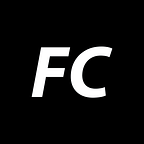Why Use Cases Should Come Before Technology for Startups
By Joseph Flaherty, Content & Community
During the Space Race, NASA supposedly spent millions developing a pen for Astronauts that would work in zero-gravity while Russian Cosmonauts used a pencil. The story turns out to be an urban legend, but it’s a good reminder that engineers sometimes over rely on technology in favor of simpler solutions. This lesson applies to entrepreneurs as well.
For instance, Ben Rubin founded his first company, Zeo, during his third year at Brown University. Zeo was a wearable that tracked brainwaves and shared tips on how to achieve the perfect snooze. The company was ahead of its time, started five years before Fitbit and almost a decade before VCs awoke from their hardware slumber. Zeo garnered $32M from top-tier health tech investors, as well as Johnson and Johnson and Best Buy, and enjoyed some small triumphs in the company’s nine-year history before ultimately shutting down.
When asked if he thought Zeo would’ve been more successful had it launched a few years later when hardware-focused incubators like Bolt were around to help with manufacturing, and the market was ready for quantified self apps, Ben demurred.
He cited a company, Beddit, which attached to a mattress rather than the drooling dreamer, yet was basically another gadget/app combo that tracked sleep patterns. Unlike Zeo, Beddit launched at the zenith of the quantified self craze and scored partnerships with companies like Misfit before being acquired by Apple for an undisclosed sum, meaning that it didn’t meet Apple’s threshold of materiality.
While a modest sale is better than no sale at all, Ben wasn’t jealous of Beddit. He was impressed with the improvements they made to the form factor, but in terms of recent sleep-related startup successes, nothing comes close to Casper. Ben’s goal was to start a company that would serve insomniacs in search of ZZZs, he was on a mission to change the way people sleep, and not just save them a bit of time, money, and hassle. But it has turned out the biggest financial opportunity at that intersection of REM sleep and startups wasn’t a clinically-tested device that collected data, but multi-density memory foam stuffed into a cardboard box. Making mattresses more affordable, attainable, and attractive has proven to be more lucrative than any sleep app or wearable.
It makes sense, when searching for a solution to insomnolence, what’s the better solution; wearing a headband to bed every night, or simply upgrading your sleep surface? It’s not to say there can’t be a tech-driven solution to the problem, or that money should be the only measure of success, but for startups it is important to remember the use case and not to fetishize a particular solution.
Despite suffering some restless nights running Zeo, and missing the mattress explosion of 2013, Ben is still at work trying to help people recharge more efficiently. Today, he’s targeting mindfulness in the form of a company called 10% Happier which may yet turn out to combine the commercial success of Casper with the data-driven design of Zeo.
